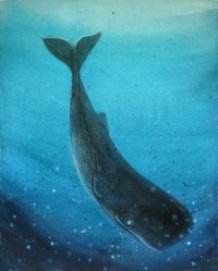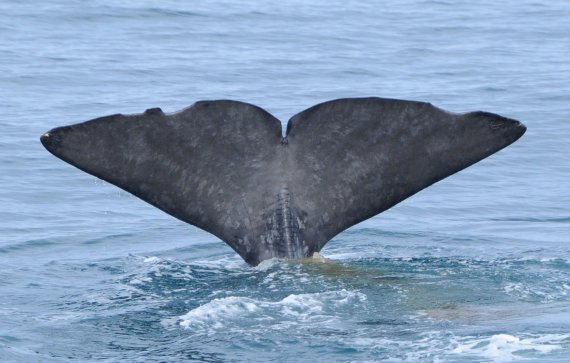The tail works similar to a finger print for humans, no two tails are alike, explains Mul, a biologist. ‘The scarring and colour patterns made up of white and yellow spots makes them unique.’ The idea is to create a database which consists of photos of the tails of sperm whales.When they dive the whale shows its tails and people take pictures of them a lot. For example on whale watching trips in Norway. It was on such a trip when Mul first got into contact with these animals. ‘I was lying down on the deck because of sea sickness, when I saw a whale pass the ship. I was instantly cured.’ The animal has been on his mind ever since.
I was lying down on the deck because of sea sickness, when I saw a whale pass the ship. I was instantly cured.
Evert Mul, Biologist
The journey to Norway was his motivation to study biology. He graduated recently at the university of Wageningen. The idea of creating a database of whales came up during his summers when he worked as a whale watching tour guide. The blueprint is already there: ‘there are already 122 sperm whales in the database and we’re planning to expand it. I am currently in contact with someone from the Azores islands who has catalogued thousands of animals. But those include females and youngs.’MalesThe focus for the database of the Imares biologist is with the males of the species. Specifically the 29 male sperm whales who were beached on the coastlines of the North Sea this year. Six whales died on the isle of Texel last year and Mul wants to know how the animals got there. The database could provide information of where they are originating from and which way they went. Around 7.000 sperm whales live in the Northern parts of the Atlantic Ocean. Sounds like it is impossible to find these 29 male whales.

Mul doesn’t think so: ‘I think these whales are originally from Norway and they came to the South to mate. Along the way they took a wrong turn and they ended up here. There are around a thousand male whales in Norway so chances are that someone spotted one of the whales there.’ Mul hopes that eventually a European or global database will be created to track the species and monitor their migration patterns.CrowdfundingTo make the database possible, Mul has set up a crowd funding program. People who are interested can invest in the project for a minimum of 15 euros. In return the investors get an illustration of a whale made by child book illustrator Linde Faas. See the website crowdfunding.wageningenur.nl for more info. The campaign has already managed to raise one thirds of the required funds.

